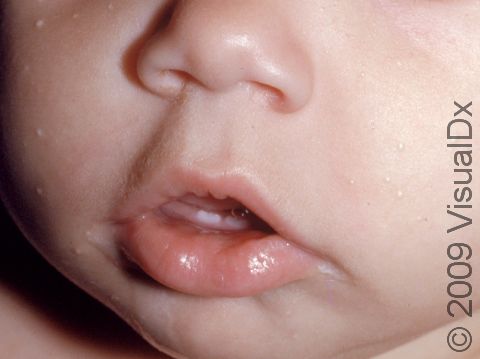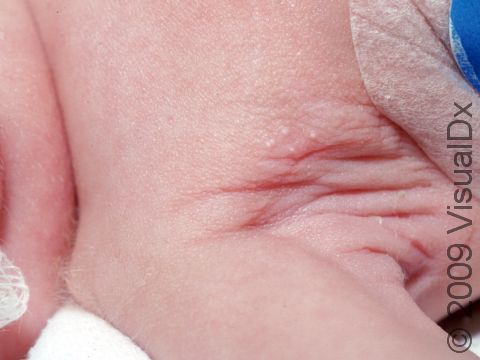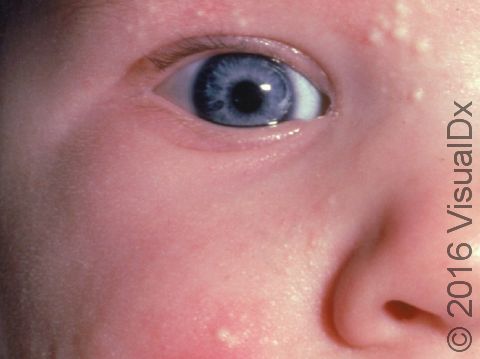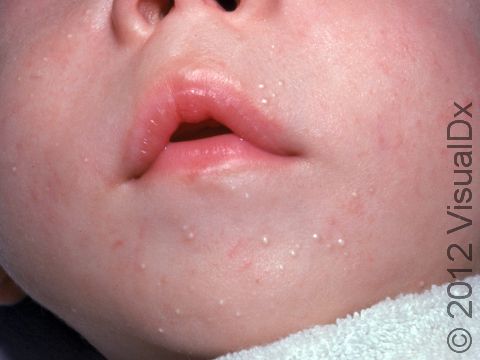Milia
Milia are tiny cysts (enclosed lumps underneath the skin) that are common in people of all ages but are especially common in newborns. Milia form because the oil gland in the infant is still developing, and the skin does not slough off normally but will instead remain trapped in a pocket in the skin. Milia are classified into 2 types: primary milia, which occur on normal, healthy skin; and secondary milia, which are typically found on skin affected by another skin condition.
Who's At Risk?
Milia can occur in all populations and ages. Primary milia are especially common in newborns (occurring in up to 50%) and are considered normal. Secondary milia are less common in infants but may appear if there is some sort of injury to the skin.
Signs & Symptoms
Milia appear as tiny (1-2 mm), white-to-yellow, dome-shaped cysts in the superficial skin.
The most common locations for primary milia in infants include:
- Around the nose.
- Around the eye.
- The cheeks.
- The chin.
- The forehead.
Milia can be found on the roof of the mouth in infants, in which case they are called Epstein pearls.
Self-Care Guidelines
Do not attempt to remove milia at home. Primary milia in infants tend to resolve on their own within several weeks, although they may persist for 2 or 3 months.
Treatments
If the medical professional diagnoses primary milia in your infant, no treatment is necessary, as the condition will resolve on its own with time.
Visit Urgency
Any new cyst on your baby’s skin should be evaluated by a medical professional.
Trusted Links
References
Bolognia J, Schaffer JV, Cerroni L. Dermatology. 4th ed. Philadelphia, PA: Elsevier; 2018.
James WD, Elston D, Treat JR, Rosenbach MA. Andrew’s Diseases of the Skin. 13th ed. Philadelphia, PA: Elsevier; 2019.
Kang S, Amagai M, Bruckner AL, et al. Fitzpatrick’s Dermatology. 9th ed. New York, NY: McGraw-Hill Education; 2019.
Paller A, Mancini A. Paller and Mancini: Hurwitz Clinical Pediatric Dermatology. 6th ed. St. Louis, MO: Elsevier; 2022.
Last modified on June 18th, 2024 at 8:41 am

Not sure what to look for?
Try our new Rash and Skin Condition Finder




